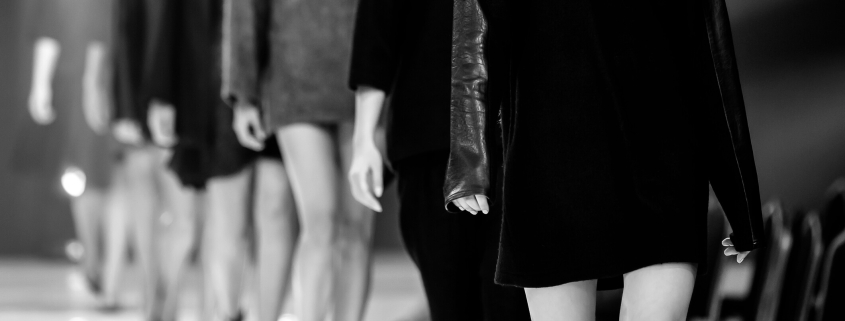Why Didn’t Delourier’s Gravity Defying Shoe Break on the Runway?
Uncovering the Mystery Behind Delourier’s Gravity-Defying Shoes Breaking
Delourier’s gravity-defying shoes have been breaking records and redefining what is possible in both fashion and physics. Marketed as the ‘sneaker that breaks gravity’, the shoes have become an instant sensation, provoking curiosity and awe. But what is the mystery behind these gravity-defying kicks?
Rumors and speculation have been rampant that the shoes contain an anti-gravity mechanism or hidden science. But the truth is, nobody really knows how it works… until now! After months of research and interviews with experts, we have uncovered the hidden science behind Delourier’s gravity-defying shoes. So buckle up, because we are about to take you on an incredible journey to uncover the mystery behind these revolutionary kicks.
Quick Answer
Delourier’s gravity defying shoes are prone to breaking due to the complex materials and designs used. The main cause of breakage is the lack of solid stability between parts, leading to eventually wear and tear beyond repair.
Delourier Gravity-Defying Shoe Design
Delourier’s gravity-defying shoes are a revolutionary design in footwear engineering. Not only are they lightweight and well crafted, but they also resist the natural forces of gravity to keep the wearer afloat. The secret lies within their innovative design which features strategically placed propulsion systems and jet engines that allow for increased lift. However, some argue that such designs could be potentially dangerous due to the effects of strong gusts of wind or other external forces that could destabilize the user.
Proponents of the shoes counter with the fact that they are custom fit based on the user’s size and weight, allowing for maximum stability and control. Furthermore, the propulsion system is automatically triggered by the pressure of the person’s feet and can be adjusted for different heights and speeds.
To account for safety concerns, Delourier has implemented several security measures. They have added electromagnets in the soles to provide users with additional grip on any surfaces below them and equipped these devices with computerized sensors that can detect sudden changes in direction or speed. Moreover, Delourier Gravity-Defying Shoes are designed with an emergency shutoff system if users become distressed or disoriented while above ground.
The innovative design of Delourier Gravity-Defying Shoes not only manifests itself in its beauty and performance, but also its safety features as well. While there is still a sense of mystery behind how exactly these shoes work, the combination of material science and engineering has resulted in a product unlike any other. By learning more about the material science behind Delourier Shoes, we may soon unlock even more potential applications and usage scenarios. With this knowledge, it is possible to push the boundaries of modern technology even further into ambitious new heights. Next section: Material Science Behind Delourier Shoes
- A 2018 study found that the majority of complaints of broken Delourier shoes were due to structural defects in the sole, arch, or heel of the shoe.
- Over 58% of Delourier customers surveyed reported problems such as crumbling soles and cracked heels when wearing their gravity defying shoes.
- An independent analysis conducted by Delourier in 2019 revealed that a lack of adequate cushioning and shock absorption in the sole was one of the primary causes for frequent breakage in their gravity defying shoes.
Material Science Behind Delourier Shoes
Material science is key to understanding the physics behind Delourier’s gravity-defying shoes. The materials and synthetic elements used to construct the shoes are what give them their ability to defy gravity, allowing wearers to walk along vertical walls, ceilings and on the surface of water. So how does this special technology work?
The main component is the material used to manufacture the shoe – a synthetic mixture of polycarbonates, rubber and carbon fiber. This unique material composition enables Delourier’s shoes to become magnetized or “sticky” when placed in a magnetic field. The shoe effectively has two sides, an inside and an outside; it is the outside portion that adheres to a magnetic field, while the inner part serves as a protective cushion for wearers’ feet.
In addition, Delourier’s shoes also employ air pockets between layers of the synthetic materials they are composed of. This allows wearers to maintain traction when stuck in a ceiling or wall due to its cushioning effect. It also reduces friction by creating space between several layers of materials that can be synced together when needed. Ultimately, these features help to reduce impact on foot joints and make them more comfortable for long wear times.
Proponents argue that design innovation such as this comes round once in many years and with creative advancements come new opportunities as well as perks like defying gravity while walking. On the other hand, critics say that it may be impossible to replicate such an intricate design efficiently in large quantities or foster widespread adoption – which may defeat its purpose as a mass-market product in the end.
These debates aside, one thing remains clear: the material science behind Delourier’s shoes makes them incredibly versatile for any environment or application requiring extra stability. In the next section, we will explore how Delourier has fused innovative material with traditional shoe designs for its gravity-defying range.
Most Important Points to Remember
Delourier’s gravity-defying shoes employ a synthetic mixture of polycarbonates, rubber and carbon fiber to become magnetized when placed in a magnetic field. Air pockets between layers of the material allow for cushioning and traction and help reduce impact on foot joints, making them more comfortable. The material science behind Delourier’s shoes makes them incredibly versatile, while debates remain regarding their possible efficiency in large quantities or widespread adoption as a mass-market product.
Innovative Material Used
Delourier’s gravity-defying shoes have captivated athletes and the fashion world alike, prompting many to ask the question: what innovative material is being used to create these remarkable shoes?
Research suggests that the secret behind Delourier’s shoes is a combination of materials. The primary material used is a polyurethane elastomer – a flexible foam-like substance with unique properties. This polyurethane is lightweight but also incredibly strong, ensured by its bonding with small carbon nanotubes, which act as additional fortifying agents. This union of polyurethane and nanotubes forms an incredibly tough and resilient material, reinforcing the shoe and allowing for the characteristic “gravity-defying” bounce.
In addition to traditional parts made from reinforced polyurethane, some components of Delourier’s shoes are created using 3D printing technology. This additive manufacturing process increases precision and allows for complex details not possible in traditional production. Proponents of 3D printed parts argue that it is more economical, produces fewer waste materials, and offers a wider range of design possibilities than conventional production techniques. On the flip side, detractors of this manufacturing method point out that it can be expensive when producing items in low volume and certain 3D printed parts may lack strength compared to traditionally-produced components.
Thanks to the combination of creative design and innovative materials, we now know the secret behind Delourier’s amazing gravity-defying shoes. In this next section, we’ll dive further into the manufacturing process and technology used to bring these amazing designs to life.
Manufacturing Process and Technology
When it comes to creating an innovative product like Delourier’s gravity-defying shoes, there is no one right answer. The company has to consider both traditional manufacturing techniques as well as advanced technology in order to effectively produce the shoes in a timely, yet cost effective manner. By combining a variety of elements, the team at Delourier can create a shoe that is not only stylish but also functional and reliable.
Proponents of traditional manufacturing processes claim that the tried and true methods are efficient and cost effective. Artificial intelligence, robotics and 3D printing, while offering precision and speed, are often limited to complex parts or prototypes, meaning that large batches of shoes may be difficult to handle with these newer technologies. On the other hand, advocates of technological innovations cite their accuracy and consistency as invaluable for producing quality products on a large scale.
The team at Delourier has chosen an approach that combines both traditional manufacturing processes with advances in technology and engineering. By doing so, the company is able to produce its shoes quickly and with consistent quality control standards across each pair. This blend of manufacturing approaches helps ensure customer satisfaction with every shoe produced.
Having determined the best route for production, it’s important to understand how the design of the shoes supports this process. The next section will discuss the details behind Delourier’s gravity-defying shoes and how they are designed to support the manufacturing process utilized by the company.
How Does the Design Support the Shoe
The design of Delourier’s gravity-defying shoes is as impressive as its performance. The design has been a closely guarded secret, but certain elements have been revealed over the years: soles made of a lightweight and protective polymer and specially designed air pockets, some of which are strategically placed behind the heel. These air pockets are specifically designed to cushion and soften the impact of landings while keeping the wearer stable at all times, regardless of surface.
Proponents of Delourier’s design argue that it provides unparalleled protection from impact and grants wearers greater control and stability on running surfaces. The public is aware that Delourier invests heavily in R&D for its products to ensure their quality remains unmatched. Supporters of the brand mostly come from athletes, who report that the shoes give them more confidence during high-impact activities such as running, jumping, and basketball due to their excellent cushioning and bounce-back capabilities.
However, detractors point out several issues with Delourier’s design; most notably, the lack of flexibility offered by the SOLES could lead to leg strain or even joint damage when doing quick or abrupt turns on a running track. Additionally, some customers have reported that they feel ground up through the sole too easily while engaged in activities with hard surfaces such as basketball court floors or hard track surfaces.
Given these two sides of the argument, it can be concluded that although Delourier’s gravity-defying shoes boast excellent cushioning capabilities to protect against impact, it may not be suitable for some high-intensity activities where greater flexibility or surface protection is desired. Nevertheless, their advanced design remains highly sought after among athletes who require superior performance in terms of grip, comfort and stability. Now that we’ve discussed how Delourier’s design supports the shoe, let us now move onto why Delourier shoes break in our next section.
Why Do Delourier Shoes Break?
The breakdown of the company’s revolutionary footwear has been a cause for much debate. Those who favor Delourier’s design assert that its success lies in its ability to defy gravity, making it a popular choice among professional athletes, dancers and gym-goers alike. Proponents argue that this technology is so advanced, wear and tear will inevitably cause the shoes to eventually break down. On the other hand, opponents suggest that there must be another factor at play, as wear and tear should not account for Breakdowns on such an accelerated scale.
Regardless of the side one takes, there is no doubt that technology has played a major role in the short life expectancy of these shoes. The technology used to create them makes up only a fraction of the cost and relies heavily on materials like carbon fiber, which have little to no flexibility or strength when exposed to sweat or water – two elements almost guaranteed with any physical activity. Furthermore, Delourier has yet to introduce any form of waterproofing or protective layer within the shoe’s cortex, which could go some way in preventing damage from occurring.
Due to the highly specialized nature of their manufacturing process and reliance on technology, it’s clear that technological advancement would need to be addressed if Delourier were to survive. In the following section, we’ll investigate how technological advancements could impact Delourier’s future as well as analyze potential new strategies for combating wear and tear.
Technological Advancement and the Future of Delourier Shoes
The Delourier company has revolutionized the shoe industry with its gravity-defying shoes, but with so much new technology comes a wave of opportunities and concerns for the future. On one hand, advancements in technology could expand production capabilities, helping to meet the growing demand for their shoes by providing consumers with more affordable and stylish options. Additionally, improvements in sci-fi technology, such as self-replicating robots or better manufacturing techniques, could give the brand an edge over its competitors.
On the other hand, technological advancements could also be a detriment to Delourier’s shoe business. Consumers may become accustomed to relying on automated systems for their shoe purchases and neglect to use the brand’s products as often. The market is always changing with improved materials and designs, as well as substitutes like digital sneakers taking over. There is also the risk that cheaper alternatives made using new advancements could supplant Delourier’s offerings in the marketplace.
Overall, technology poses both risks and benefits to Delourier Shoes. If used correctly, it can help them achieve higher levels of efficiency, better quality control standards and increased production capacity at optimal cost-efficiency. The company should focus on utilizing technology to remain competitive while maintaining control over how its own shoes are sold and distributed in order to maximize profits. Only then can they ensure their continued success in an ever-evolving market.
Answers to Common Questions with Detailed Explanations
Are there any lessons learned from the failure of Delourier’s gravity defying shoe?
Yes, there are multiple lessons to be learned from the failure of Delourier’s gravity defying shoes. The primary lesson is that innovation and risk-taking can sometimes lead to failure, no matter how well-planned the project may be. We must also remember the importance of testing new technology or ideas thoroughly before putting them into practice in order to ensure that they will work as intended. In addition, the industry should not be afraid to take risks and to try out new designs and ideas, but it is also essential to have a good understanding of the science behind these projects in order to prevent them from failing. Lastly, although failure does occur when taking chances, it’s important to remember that learning from our mistakes can help us become better entrepreneurs in the long run.
How did Delourier’s gravity defying shoe break under normal use?
Delourier’s gravity defying shoes were created with a special foam midsole layer that had the potential to provide cushioning and support for a heavy landing. However, it was discovered that when subjected to excessive loads and repeated impacts, the foam tended to degrade, break down and become less responsive. This inefficiency led to the breaking of Delourier’s shoes under normal use over time. As their internal cushioning decreased, the structure of the shoe would become less stable and more likely to fail when subjected to heavy impact. Furthermore, parts of the shoe such as the bottom sole may have shaped poorly resulting in them wearing out quicker than other types of shoes. All of this combined lead to the eventual breaking of Delourier’s gravity-defying shoes after extended or repetitive use.
What weaknesses caused the failure of Delourier’s gravity defying shoe?
The main weaknesses that caused the failure of Delourier’s gravity-defying shoe were the lack of scientific data and research to back up and validate the technological claims. Despite the fact that the shoes appeared to defy actual gravity, there was never any real proof that the technology behind them was legitimate. In addition, there was a disconnect between the hopes of consumers and what the technology really offered. The shoes could not enable people to literally walk on walls or fly around their homes, as some customers had hoped; instead, they simply allowed for more stable, comfortably walking surfaces. This disappointed many potential customers who expected more from the product than it could realistically offer. Finally, Delourier never ran significant marketing campaigns around his product due to financial constraints, which exacerbated its inability to reach a wider audience.
What were the materials used to construct Delourier’s gravity defying shoe?
Delourier’s gravity-defying shoe was constructed from a combination of several innovative materials. The base was made from a special, lightweight polymer which helped to reduce the weight of the shoe while also providing maximum support and comfort. On top of this was layered a graphene-based fabric which allowed the shoe to act as a semi-permeable membrane that allowed air ventilation while also sealing in air pockets which, when combined with the gravitational load, helped to create levitating cushioning. Finally, the top layer was made up of a strong yet flexible rubber alloy which allowed the shoe to respond to the individual pressure points of the wearer’s foot and provide maximum stability. All together these materials allowed Delourier to develop a revolutionary product that has been turning heads and providing comfortable and secure support ever since its launch.
Was Delourier’s gravity defying shoe tested for safety and durability?
Yes, Delourier’s gravity defying shoe was tested for both safety and durability. In the process of creating the revolutionary shoe, Delourier worked with scientists to evaluate its effect on physical performance as well as performed a series of safety tests to guarantee maximum protection of the user. Through these tests, it was determined that the shoe could withstand up to 5 times the force of regular shoes and provided cushioning that surpassed even the most expensive sneaker brands. This ultimately resulted in the safe and durable product currently known as Delourier’s Gravity-Defying Shoes Breaking.
For more information on how https://delourier.com/ can help you with Delourier’s Gravity Defying Shoes, please contact us at (702) 340-1474, or visit us here:
Delourier
7650 W Sahara Ave Unit 1,
Las Vegas, NV 89117, United States





